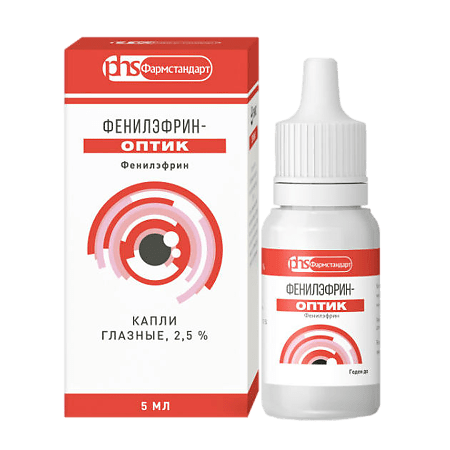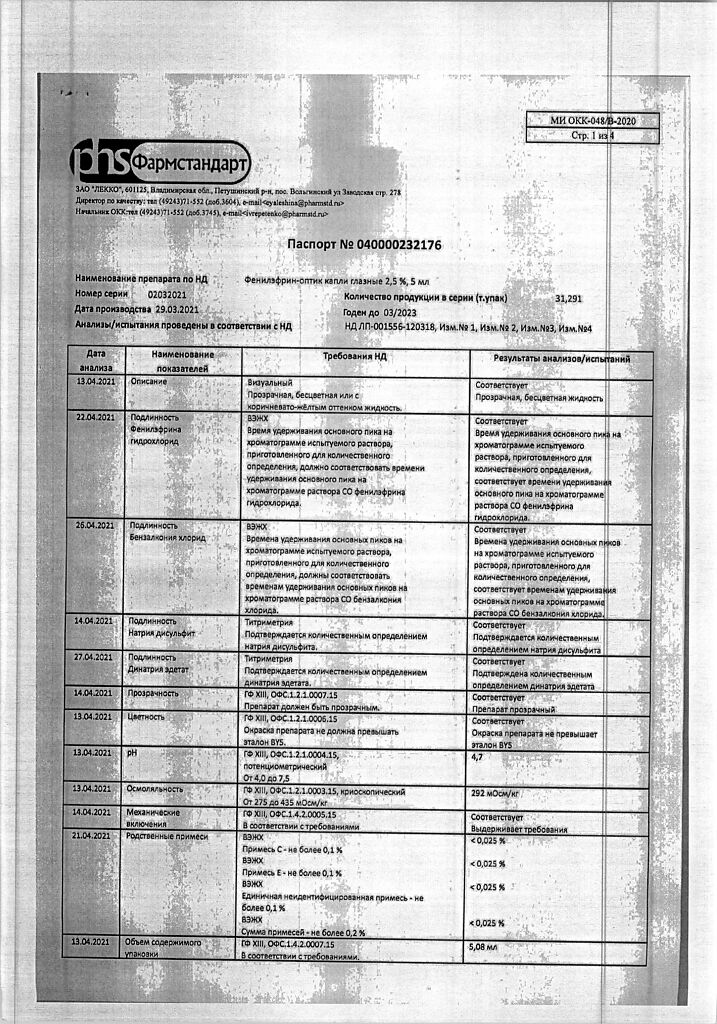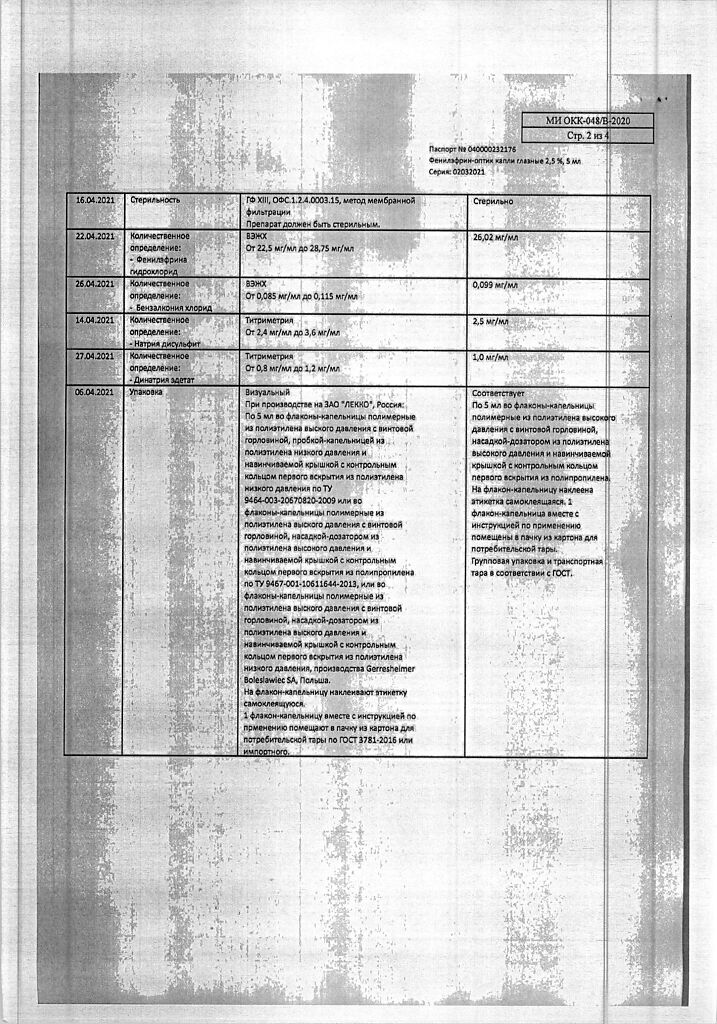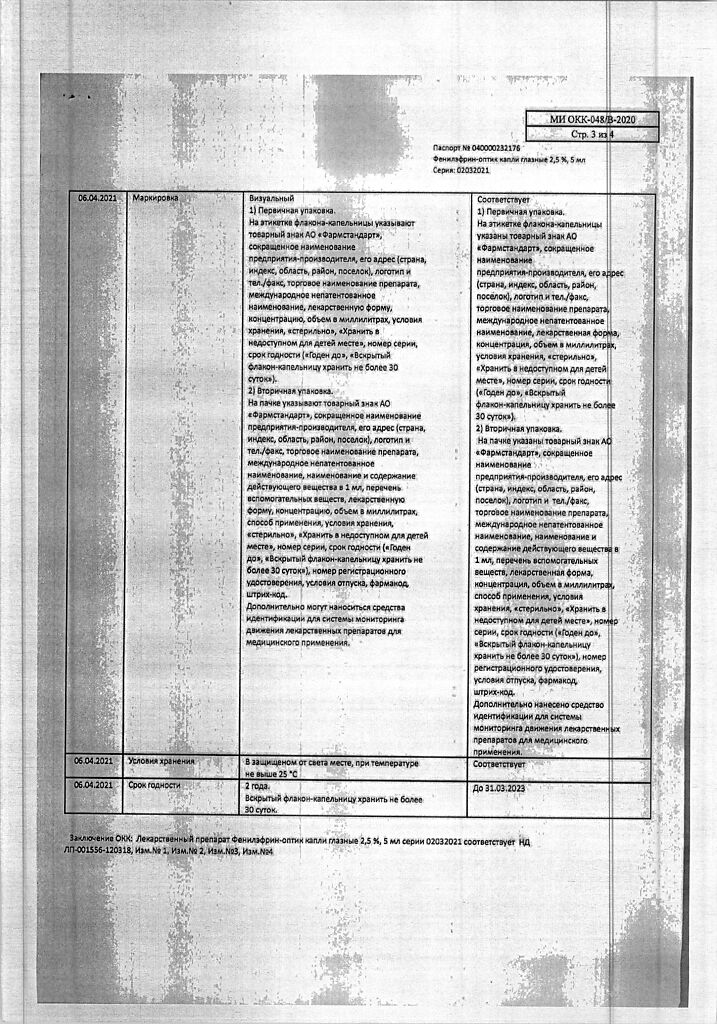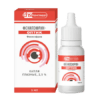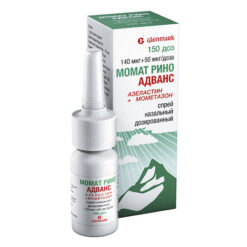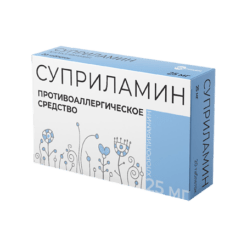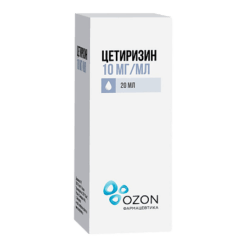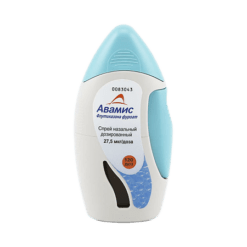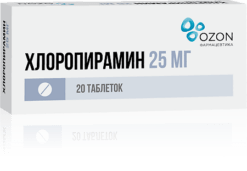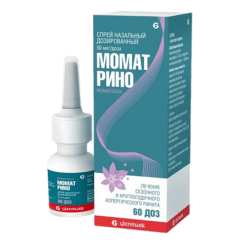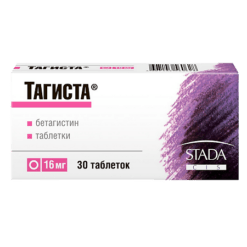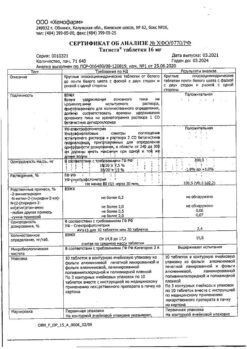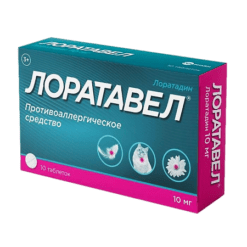No products in the cart.
Phenylephrine optic, eye drops 2.5% 5 ml
€11.01 €9.17
Description
Phenylephrine is an a-adrenomimetic with a marked non-selective a-adrenomimetic effect. When used in therapeutic doses it has no significant stimulating effect on the central nervous system.
When used topically in ophthalmology it causes dilation of the pupil, improves the outflow of intraocular fluid and narrows the conjunctival vessels.
It weakly affects β-adrenoreceptors including those in the heart (does not have positive chrono- and inotropic effects). The drug has a vasoconstrictor effect similar to that of norepinephrine (noradrenaline). The vasopressor effect of phenylephrine is weaker than that of norepinephrine, but it is more durable. Causes vasoconstriction 30-90 seconds after instillation, duration 2-6 h.
Phenylephrine causes contraction of the pupil dilation muscle after instillation, thereby causing pupil dilation. Midriasis occurs within 10-60 minutes after a single instillation. Midriasis persists for 2 hours. Midriasis caused by phenylephrine is not accompanied by cycloplegia.
Indications
Indications
Iridocyclitis (to prevent the occurrence of posterior synechiae and reduce exudation from the iris).
For diagnostic pupil dilation during ophthalmoscopy and other diagnostic procedures necessary to monitor the condition of the posterior segment of the eye.
Conducting a provocative test in patients with a narrow anterior chamber angle profile and suspected angle-closure glaucoma.
Differential diagnosis of superficial and deep injection of the eyeball.
Red eye syndrome (to reduce hyperemia and irritation of the eye membranes).
Spasm of accommodation.
Pharmacological effect
Pharmacological effect
Phenylephrine is an α-adrenergic agonist and has a pronounced non-selective α-adrenergic agonist effect. When used in therapeutic doses, it does not have a significant stimulating effect on the central nervous system.
When applied topically in ophthalmology, it causes dilation of the pupil, improves the outflow of intraocular fluid and constricts the vessels of the conjunctiva.
Weak effect on β-adrenergic receptors, including the heart (does not have a positive chrono- and inotropic effect). The drug has a vasoconstrictor effect similar to the action of norepinephrine (norepinephrine). The vasopressor effect of phenylephrine is weaker than that of norepinephrine, but is longer lasting. Causes vasoconstriction 30-90 seconds after instillation, duration 2-6 hours.
After instillation, phenylephrine causes contraction of the dilator muscle, thereby causing pupil dilation. Mydriasis occurs within 10-60 minutes after a single instillation. Mydriasis persists for 2 hours. Mydriasis caused by phenylephrine is not accompanied by cycloplegia.
Special instructions
Special instructions
The mydriatic effect of phenylephrine is enhanced when used in combination with topical atropine. Due to increased vasopressor action, tachycardia may develop.
The use of phenylephrine with monoamine oxidase inhibitors, as well as within 21 days after stopping their use, should be used with caution, since in this case there is the possibility of an uncontrolled rise in blood pressure.
The vasopressor effect of α-adrenergic agonists can also be potentiated when used simultaneously with tricyclic antidepressants, propranolol, reserpine, guanethidine, methyldopa and m-anticholinergics.
Phenylephrine may potentiate the depression of cardiovascular activity during inhalation anesthesia.
Concomitant use with other adrenergic agonists and sympathomimetics may enhance the effect of phenylephrine on the cardiovascular system.
The use of phenylephrine may weaken concomitant antihypertensive therapy and lead to an increase in blood pressure and tachycardia.
Active ingredient
Active ingredient
Phenylephrine
Composition
Composition
Active ingredient:
phenylephrine hydrochloride – 25.0 mg.
Excipients:
benzalkonium chloride, calculated as an anhydrous substance – 0.1 mg,
disodium edetate – 1.0 mg,
sodium hydroxide – 0.24 mg,
sodium disulfite – 3.0 mg,
citric acid monohydrate – 1.0 mg,
sodium citrate dihydrate – 5.0 mg,
purified water – up to 1 ml.
Pregnancy
Pregnancy
There is no sufficient experience with the use of phenylephrine during pregnancy.
Therefore, the use of the drug as prescribed by the attending physician during pregnancy is possible if the potential benefit to the mother outweighs the possible risk to the fetus. It is not known whether the drug is excreted in breast milk.
When prescribing the drug, it is recommended to stop breastfeeding during treatment.
Contraindications
Contraindications
Hypersensitivity to the components of the drug.
Narrow-angle or closed-angle glaucoma.
Old age.
Severe cardiovascular or cerebrovascular diseases.
Arterial hypertension in combination with coronary artery disease, aortic aneurysm, atriovenous tricular block I-III degree, arrhythmia.
Tachycardia.
Impaired tear production.
Prematurity; children under 6 years of age (with spasm of accommodation).
Hyperthyroidism.
Hepatic porphyria.
Congenital deficiency of glucose-6-phosphate dehydrogenase.
Rhinitis.
With caution
Diabetes mellitus (risk of increased blood pressure associated with impaired autonomic regulation).
Concomitant use with monoamine oxidase inhibitors (including within 21 days after stopping their use).
Sickle cell anemia, wearing contact lenses, after surgery (decreased healing due to conjunctival hypoxia).
Side Effects
Side Effects
From the side of the organ of vision
Conjunctivitis, periorbital edema.
In some cases, patients note a burning sensation at the beginning of use, blurred vision, irritation, discomfort in the eye, increased lacrimation, and increased intraocular pressure.
Phenylephrine may cause reactive miosis the day after use.
Repeated instillations of the drug over a short period of time may lead to less severe mydriasis than previously observed. This effect is more common in older patients.
Due to a significant contraction of the muscle that dilates the pupil, 30-45 minutes after instillation under the influence of phenylephrine, pigment particles from the pigment layer of the iris may be detected in the moisture of the anterior chamber of the eye.
Suspension in the chamber fluid must be differentiated from manifestations of anterior uveitis or from the ingress of blood cells into the fluid of the anterior chamber.
Systemic reactions
From the skin and its appendages: contact dermatitis.
From the cardiovascular system: palpitations, tachycardia, arrhythmia, increased blood pressure, ventricular arrhythmia, reflex bradycardia, coronary artery occlusion, pulmonary embolism.
Interaction
Interaction
The mydriatic effect of phenylephrine is enhanced when used in combination with topical atropine. Due to increased vasopressor action, tachycardia may develop.
The use of phenylephrine with monoamine oxidase inhibitors, as well as within 21 days after stopping their use, should be used with caution, since in this case there is the possibility of an uncontrolled rise in blood pressure.
The vasopressor effect of α-adrenergic agonists can also be potentiated when used simultaneously with tricyclic antidepressants, propranolol, reserpine, guanethidine, methyldopa and m-anticholinergics.
Phenylephrine may potentiate the depression of cardiovascular activity during inhalation anesthesia.
Concomitant use with other adrenergic agonists and sympathomimetics may enhance the effect of phenylephrine on the cardiovascular system.
The use of phenylephrine may weaken concomitant antihypertensive therapy and lead to an increase in blood pressure and tachycardia.
Overdose
Overdose
From the side of the organ of vision
Conjunctivitis, periorbital edema.
In some cases, patients note a burning sensation at the beginning of use, blurred vision, irritation, discomfort in the eye, increased lacrimation, and increased intraocular pressure.
Phenylephrine may cause reactive miosis the day after use.
Repeated instillations of the drug over a short period of time may lead to less severe mydriasis than previously observed. This effect is more common in older patients.
Due to a significant contraction of the muscle that dilates the pupil, 30-45 minutes after instillation under the influence of phenylephrine, pigment particles from the pigment layer of the iris may be detected in the moisture of the anterior chamber of the eye. Suspension in the chamber fluid must be differentiated from manifestations of anterior uveitis or from the ingress of blood cells into the fluid of the anterior chamber.
Systemic reactions
From the skin and its appendages: contact dermatitis.
From the cardiovascular system: palpitations, tachycardia, arrhythmia, increased blood pressure, ventricular arrhythmia, reflex bradycardia, coronary artery occlusion, pulmonary embolism.
Recommendations for use
Recommendations for use
Locally.
For iridocyclitis, the drug is used to prevent the development and rupture of already formed posterior synechiae; to reduce exudation into the anterior chamber of the eye. For this purpose, 1 drop of the drug is instilled into the conjunctival sac of the affected eye(s) 2-3 times a day.
When performing ophthalmoscopy, a single instillation of the drug is used. As a rule, to create mydriasis, instillation of 1 drop of the drug into the conjunctival sac is sufficient. Maximum mydriasis is achieved after 15-30 minutes and persists for 1-3 hours.
If it is necessary to maintain mydriasis for a long time, the drug can be re-instilled after 1 hour.
For diagnostic procedures, a single instillation of the drug is used:
– as a provocative test in patients with a narrow anterior chamber angle profile and suspected angle-closure glaucoma. If the difference between the values of intraocular pressure before instillation of the drug and after dilation of the pupil is from 3 to 5 mm Hg. Art., then the provocative test is considered positive;
– for differential diagnosis of the type of injection of the eyeball: if 5 minutes after instillation of the drug there is a narrowing of the vessels of the eyeball, then the injection is classified as superficial; if redness of the eye persists, it is necessary to carefully examine the patient for the presence of iridocyclitis or scleritis, as this indicates dilation of deeper vessels.
To relieve spasm of accommodation in children over 6 years of age and adults, the drug is instilled 1 drop into each eye at night every day for 4 weeks.
Storage conditions
Storage conditions
Store in a place protected from light at a temperature not exceeding 25 ̊ C.
Keep out of the reach of children.
Shelf life
Shelf life
2 years. Do not use the drug after the expiration date indicated on the package.
Manufacturer
Manufacturer
Lecco CJSC, Russia
Additional information
| Shelf life | 2 years. Do not use the drug after the expiration date stated on the package. |
|---|---|
| Conditions of storage | Store in a light-protected place at a temperature not exceeding 25 ̊ C. Store out of the reach of children. |
| Manufacturer | Lekko ZAO, Russia |
| Medication form | eye drops |
| Brand | Lekko ZAO |
Related products
Buy Phenylephrine optic, eye drops 2.5% 5 ml with delivery to USA, UK, Europe and over 120 other countries.

